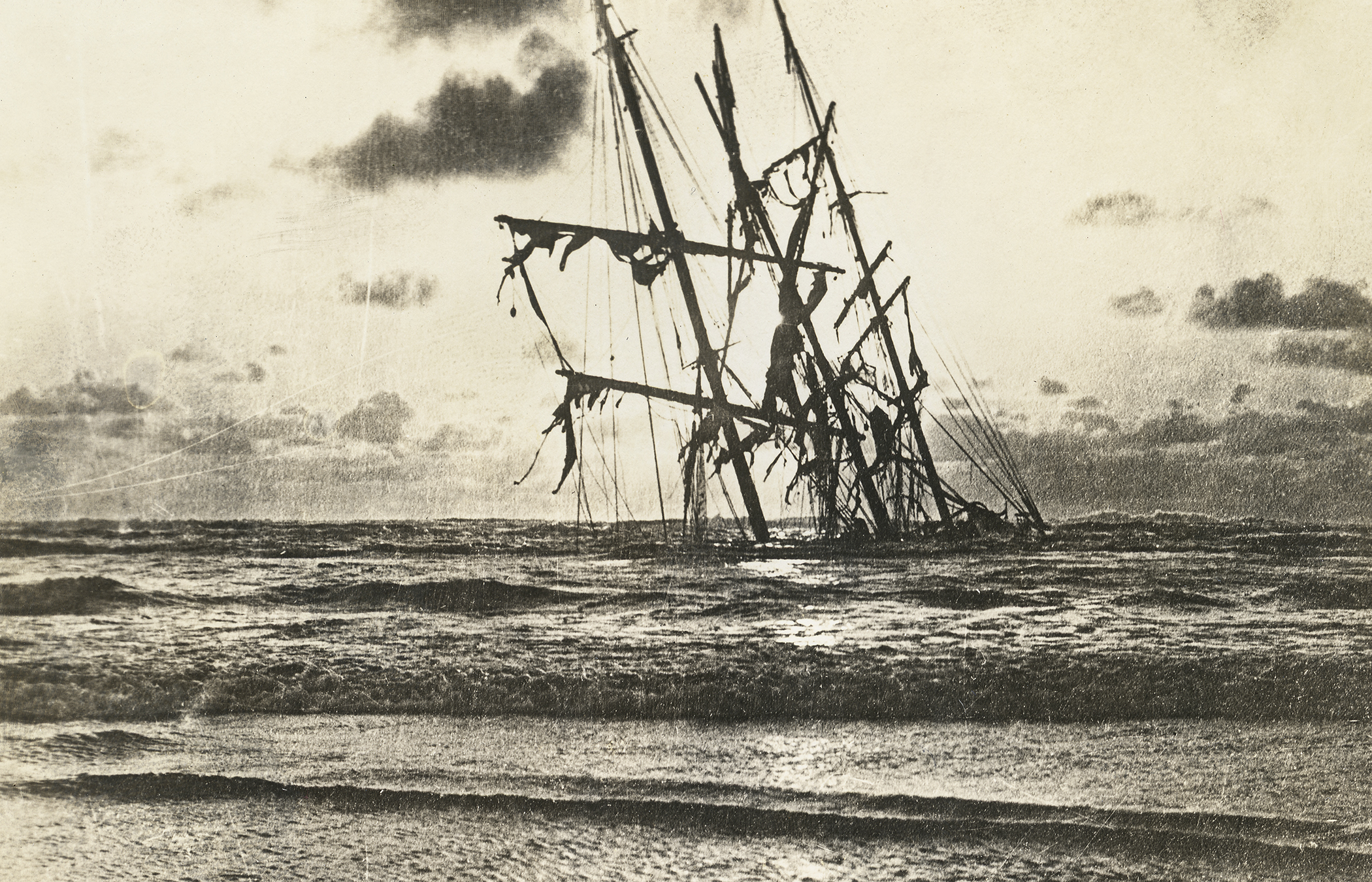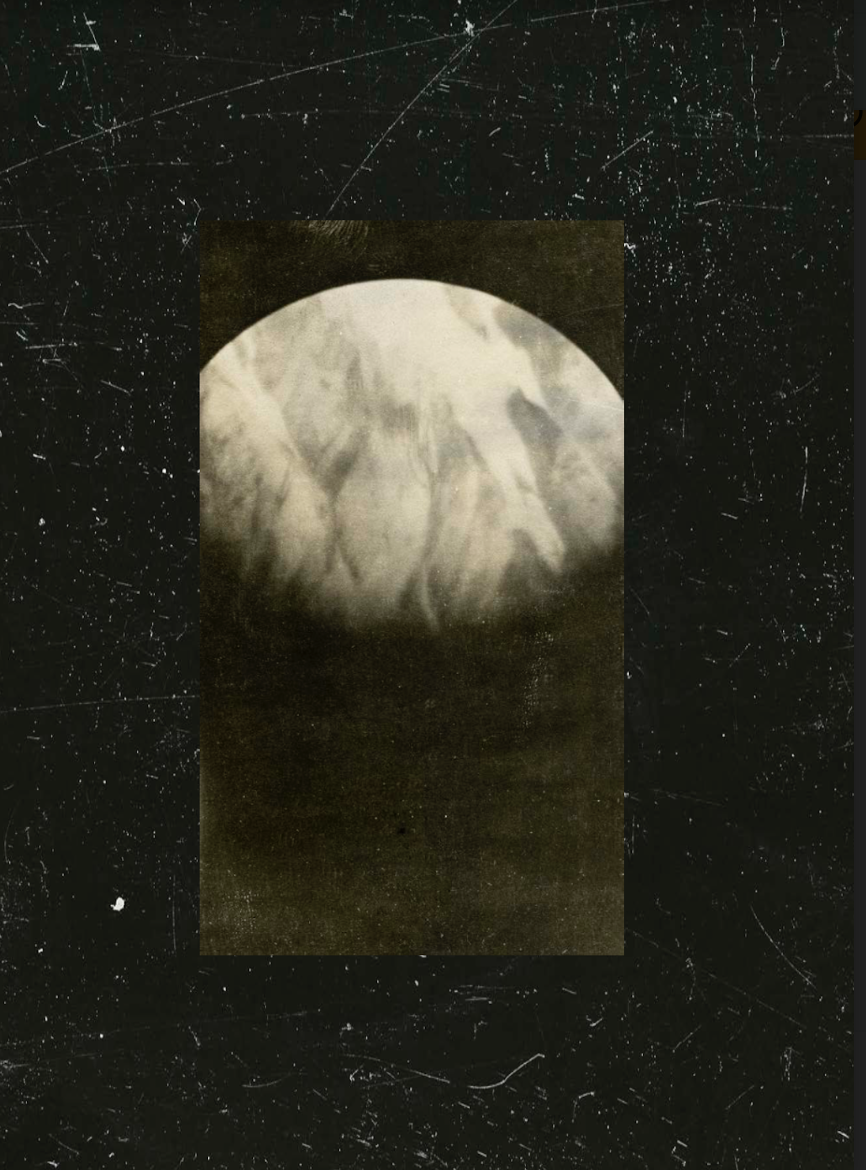 |
False Lighthouse. By Yael Eban.
|
Edited by Yael Eban
Meteoro Editions, 2019. In English. 104 pp., 7x9".
Yael Eban’s False Lighthouse is a small volume, bound in black cloth, like a ship captain’s log. The title refers to misleading, on-shore lights spied by mariners. A false light might be a light accidentally mistaken as a beacon, or, according to Eban, it may be deliberately set up to lead ships astray, making them easy prey.
Eban’s sequence of found photographs, drawn from the collection of Peter J. Cohen (which has appeared in other photobooks, such as Dive Dark Dream Slow by Melissa Catanese), unfolds narratively at first. There are shifting perspectives, moving from ship to shore: a lighthouse amidst sand dunes, like a misplaced obelisk, an ocean view, framed by the mouth of a cave. Then, a tall ship in tatters, as seen from the beach. Soon, we’re back at sea, faced with the question, why this photograph? Why this horizonless expanse of ocean? Perhaps something vanished in the second it took for the shutter to open? These are the questions prompted by many found photographs, but Eban amplifies their mystery, not only through her careful arrangement, but especially through her inclusion of damaged prints and exposure errors. A blast of light in an overexposed image might read like an explosion, or, perhaps, a ghostly spirit, haunting the frame.
 |
| False Lighthouse. By Yael Eban. |
Eban layers these photographs on top of each other, introducing a detailed image of dust and scratches on the surface of a print, behind a more representational view of a seascape. The arcing scratches seem to trace lines of longitude around the inky globe, like a star map.
Studying the images in her book, I’m reminded of the experience of trying to see in the dark. Especially by the seaside, where cresting waves intermittently catch the light, things seem to emerge from the depths. There is depth in darkness as much as there is a depth in the sea.
Slowly, the sequence of photographs begs the question: What is the truth of any representation? What makes a lighthouse false? I imagine the lookout; squinting from the crow’s nest, he attempts to discern blurry shapes on a dark and distant shore, struggling to distinguish a false lighthouse from a true one.
When looking at photographs, especially these, unmoored from their original contexts, I squint to identify what is real. Are the bright areas on the surface of these damaged prints the true lights? Or are they the result of darkroom accidents and a century of surface damage? Photographs are their own kind of false lighthouses; they promise access to a former reality, but they trick us with their flat surfaces and imagined depths.
Purchase Book
Read More Book Reviews
 Kim Beil is an art historian who teaches at Stanford University. She is the author of Good Pictures: A History of Popular Photography.
Kim Beil is an art historian who teaches at Stanford University. She is the author of Good Pictures: A History of Popular Photography.
Studying the images in her book, I’m reminded of the experience of trying to see in the dark. Especially by the seaside, where cresting waves intermittently catch the light, things seem to emerge from the depths. There is depth in darkness as much as there is a depth in the sea.
Slowly, the sequence of photographs begs the question: What is the truth of any representation? What makes a lighthouse false? I imagine the lookout; squinting from the crow’s nest, he attempts to discern blurry shapes on a dark and distant shore, struggling to distinguish a false lighthouse from a true one.
When looking at photographs, especially these, unmoored from their original contexts, I squint to identify what is real. Are the bright areas on the surface of these damaged prints the true lights? Or are they the result of darkroom accidents and a century of surface damage? Photographs are their own kind of false lighthouses; they promise access to a former reality, but they trick us with their flat surfaces and imagined depths.
Purchase Book
Read More Book Reviews
 |
| False Lighthouse. By Yael Eban. |
 |
| False Lighthouse. By Yael Eban. |










